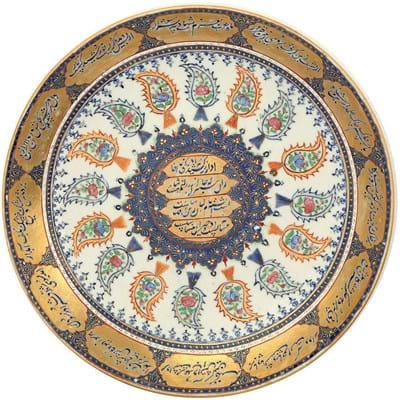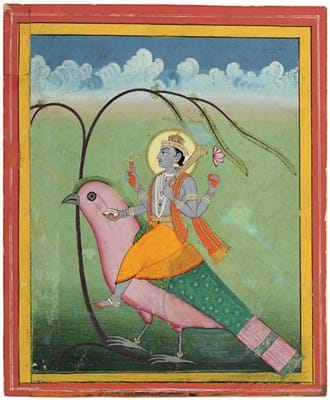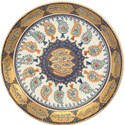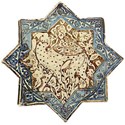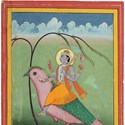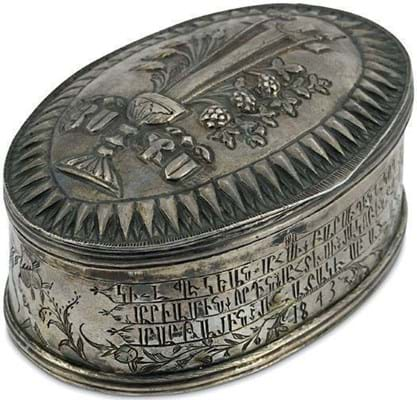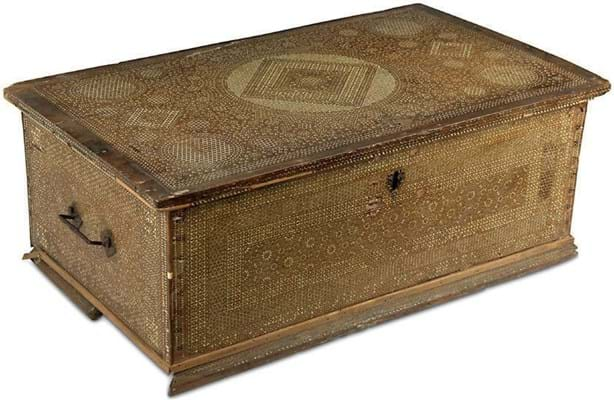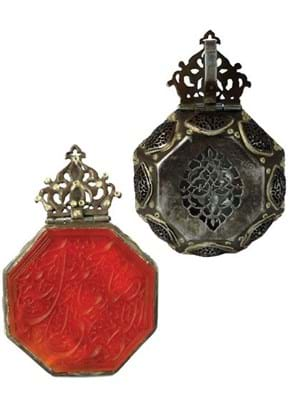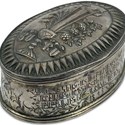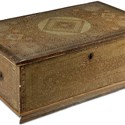A scarcer category of Qing export porcelain are the wares that reflected the close trading relationship between China and India and the nations of the Middle East.
Among the best-performing lots in the Chiswick Auctions (25% buyer’s premium) Islamic and Indian art sale on April 22 (postponed from April 3) was an 8½in (22cm) dish from a polychrome and gilt service commissioned from a wealthy Shia Muslim in either Iran or India, c.1844.
Dated 1260AH (1844), it is painted with bands of polychrome boteh (paisley design) and calligraphic medallions of nasta’liq poetry amounting to a tribute to Imam Husseyn, grandson of the prophet Muhammad and his martyrdom at the battle of Kerbela.
Museum pair
A matching dish resides in the Asian Civilisations Museum in Singapore, while the hypothesis it was once part of a larger service is confirmed by a bowl and saucer dish with the same inscriptions and date sold by Chiswick in October for £10,400. The dish, from the same ‘important European private collection’, was pitched at £800-1200 but sold online at £8500.
A group of later 19th century export bowls and saucers made for the Qajar prince Mas’ud Mirza Zill al-Sultan (1850-1918) sold at £6500 (estimate £6000-8000). Each of the six pieces, including two large 15in (37cm) ‘punch’ bowls, are dated 1297AH for 1879-80.
Alongside typical Guangdong famille rose decoration is the unusual grey-mauve ground and a gilt inscription that identifies them as part of the large service commissioned by the prince, the eldest son of the ruling Shah Naser al-Din Shah (1831-96).
As his mother was a commoner, Mas’ud Mirza was excluded from the Qajar throne and instead operated as governor of Isfahan from 1866-99. His title Zill al-Sultan means the Shadow of the King. Three other pieces from his service were sold by Chiswick Auctions for a punchier £15,200 in October.
Another Chinese work of art with an Islamic inscription was a spinach jade bowl deeply carved with four lobed cartouches of Eastern Kufic calligraphic script (the call to prayer and the beginning of the shahada) and stylised lotus flowers and leaves. It was probably made for a Chinese Muslim rather than for export.
It had a collection label for the Iranian Princess Soraya (1932-2001) and formed part of her estate sale conducted by Beaussant Lefèvre in Paris in May 2002. The hammer price this time on thesaleroom.com was £9000 (estimate £1000-1500).
In keeping with many of the ‘lockdown’ auctions held in April and May, there was no shortage of interest in this auction. It doubtless helped that other sales in the category were shelved (some London Islamic sales will be held this month). With many staff furloughed, Chiswick head of department Beatrice Campi reported the completion of 335 condition report requests via email.


